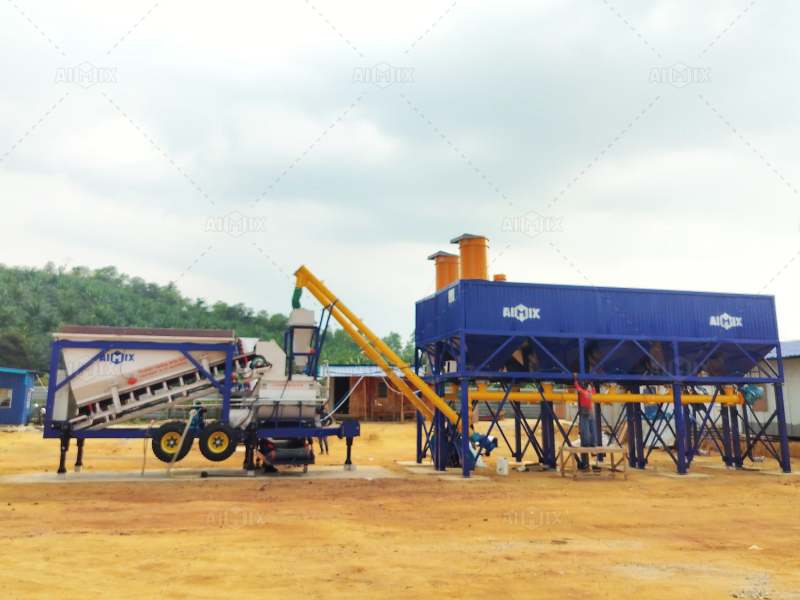


Small concrete batch plants offer affordable, flexible solutions for growing global construction demand.
The global construction industry is undergoing rapid expansion, driven by urbanization, infrastructure development, and growing demand for affordable housing. Within this dynamic environment, small concrete batch plants are emerging as versatile, cost-effective solutions that cater to diverse construction needs, particularly for small- to medium-scale projects. This article explores the market outlook and growth opportunities for small concrete batch plant worldwide, highlighting key drivers, regional trends, and future potential.
Small concrete batch plants, typically defined by their compact size and lower production capacity (ranging from 20 to 60 cubic meters per hour), offer several advantages:
Affordability: Lower initial investment and operational costs make them accessible to small contractors and startups.
Flexibility: Easy to install and relocate, ideal for projects with limited space or temporary sites.
Efficiency: Suitable for producing quality concrete on demand, reducing waste and logistics costs.
These attributes position small batch plants as an attractive option for local construction projects, rural developments, and businesses expanding their ready-mix concrete capacity without committing to large-scale plants.
Urbanization and Infrastructure Growth
Rapid urban growth in Asia, Africa, and Latin America fuels demand for new residential, commercial, and public infrastructure projects. Small concrete batch plants provide contractors the ability to meet localized concrete needs quickly and cost-effectively.
Rise of Small and Medium Enterprises (SMEs)
SMEs constitute a significant portion of the construction sector globally. Their limited budgets and project scopes make small batch plants ideal for maintaining profitability while ensuring quality.
Government Initiatives and Housing Programs
Affordable housing schemes and rural infrastructure projects initiated by governments boost demand for compact batching solutions capable of operating in remote or space-constrained areas.
Technological Advancements
Improvements in automation, control systems, and modular designs enhance the efficiency and ease of use of small concrete plants, attracting wider adoption.
Asia-Pacific:
Countries like India, Indonesia, Vietnam, and the Philippines are seeing strong infrastructure investments and urban housing demands. Small concrete batch plants are favored for their mobility and cost advantages in these rapidly developing markets.
Africa:
Infrastructure development and urbanization in Africa’s emerging economies create opportunities for affordable, flexible batching solutions. Small plants are often the first step for local contractors entering the ready-mix business.
Latin America:
Growing construction activities in Brazil, Mexico, and neighboring countries stimulate demand for small-scale plants, especially in regions with limited infrastructure and challenging logistics.
Europe and North America:
While large plants dominate, niche applications such as renovation, specialized precast, and small-scale urban projects keep a steady demand for small concrete batch plants.
Despite the promising outlook, some challenges persist:
Competition from Large Plants and Suppliers: Large plants benefit from economies of scale, potentially limiting small plants’ market share in urban centers.
Quality Control: Ensuring consistent concrete quality with smaller plants requires skilled operation and maintenance.
Regulatory Compliance: Meeting environmental and safety standards can increase operational costs for small plants.
Sustainability Focus: Integration of eco-friendly features such as dust collection, water recycling, and energy-efficient components in small batch plants will grow.
Digitalization: Remote monitoring and smart controls will enhance operational efficiency and reduce downtime.
Modularity: Increased use of modular and containerized plants will facilitate faster deployment and scalability.
The market for small concrete batch plants is set for steady growth worldwide, driven by urbanization, the rise of SMEs, and infrastructure development in emerging regions. Their affordability, flexibility, and evolving technology make them indispensable for diverse construction needs. Stakeholders investing in these plants can capitalize on expanding opportunities by focusing on quality, innovation, and adapting to regional market dynamics.
